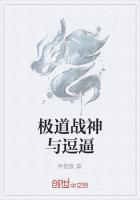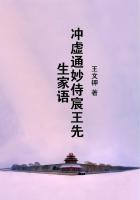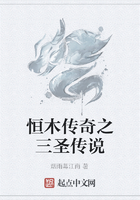With fingers weary and worn, With eyelids heavy and red, A woman sat in unwomanly rags, Plying her needle and thread.
Meanwhile, as Hood wrote and as the whole English people learned by heart his vivid lines, as great ladies wept over them and street singers sang them in the darkest slums of London, a man, hungry and ill-clad, in an attic in faraway Cambridge, Massachusetts, was struggling to put into metal an idea to lighten the toil of those who lived by the needle.His name was Elias Howe and he hailed from Eli Whitney's old home, Worcester County, Massachusetts.There Howe was born in 1819.His father was an unsuccessful farmer, who also had some small mills, but seems to have succeeded in nothing he undertook.
Young Howe led the ordinary life of a New England country boy, going to school in winter and working about the farm until the age of sixteen, handling tools every day, like any farmer's boy of the time.Hearing of high wages and interesting work in Lowell, that growing town on the Merrimac, he went there in 1835and found employment; but two years later, when the panic of 1837came on, he left Lowell and went to work in a machine shop in Cambridge.It is said that, for a time, he occupied a room with his cousin, Nathaniel P.Banks, who rose from bobbin boy in a cotton mill to Speaker of the United States House of Representatives and Major-General in the Civil War.
Next we hear of Howe in Boston, working in the shop of Ari Davis, an eccentric maker and repairer of fine machinery.Here the young mechanic heard of the desirability of a sewing machine and began to puzzle over the problem.Many an inventor before him had attempted to make sewing machines and some had just fallen short of success.Thomas Saint, an Englishman, had patented one fifty years earlier; and about this very time a Frenchman named Thimmonier was working eighty sewing machines making army uniforms, when needle workers of Paris, fearing that the bread was to be taken from them, broke into his workroom and destroyed the machines.Thimmonier tried again, but his machine never came into general use.Several patents had been issued on sewing machines in the United States, but without any practical result.
An inventor named Walter Hunt had discovered the principle of the lock-stitch and had built a machine but had wearied of his work and abandoned his invention, just as success was in sight.But Howe knew nothing of any of these inventors.There is no evidence that he had ever seen the work of another.
The idea obsessed him to such an extent that he could do no other work, and yet he must live.By this time he was married and had children, and his wages were only nine dollars a week.Just then an old schoolmate, George Fisher, agreed to support his family and furnish him with five hundred dollars for materials and tools.The attic in Fisher's house in Cambridge was Howe's workroom.His first efforts were failures, but all at once the idea of the lock-stitch came to him.Previously all machines (except Hunt's, which was unknown, not having even been patented)had used the chainstitch, wasteful of thread and easily unraveled.The two threads of the lockstitch cross in the materials joined together, and the lines of stitches show the same on both sides.In short, the chainstitch is a crochet or knitting stitch, while the lockstitch is a weaving stitch.Howe had been working at night and was on his way home, gloomy and despondent, when this idea dawned on his mind, probably rising out of his experience in the cotton mill.The shuttle would be driven back and forth as in a loom, as he had seen it thousands of times, and passed through a loop of thread which the curved needle would throw out on the other side of the cloth; and the cloth would be fastened to the machine vertically by pins.A curved arm would ply the needle with the motion of a pick-axe.A handle attached to the fly-wheel would furnish the power.
On that design Howe made a machine which, crude as it was, sewed more rapidly than five of the swiftest needle workers.But apparently to no purpose.His machine was too expensive, it could sew only a straight seam, and it might easily get out of order.
The needle workers were opposed, as they have generally been, to any sort of laborsaving machinery, and there was no manufacturer willing to buy even one machine at the price Howe asked, three hundred dollars.
Howe's second model was an improvement on the first.It was more compact and it ran more smoothly.He had no money even to pay the fees necessary to get it patented.Again Fisher came to the rescue and took Howe and his machine to Washington, paying all the expenses, and the patent was issued in September, 1846.But, as the machine still failed to find buyers, Fisher gave up hope.
He had invested about two thousand dollars which seemed gone forever, and he could not, or would not, invest more.Howe returned temporarily to his father's farm, hoping for better times.
Meanwhile Howe had sent one of his brothers to London with a machine to see if a foothold could be found there, and in due time an encouraging report came to the destitute inventor.Acorsetmaker named Thomas had paid two hundred and fifty pounds for the English rights and had promised to pay a royalty of three pounds on each machine sold.Moreover, Thomas invited the inventor to London to construct a machine especially for making corsets.Howe went to London and later sent for his family.But after working eight months on small wages, he was as badly off as ever, for, though he had produced the desired machine, he quarrelled with Thomas and their relations came to an end.
An acquaintance, Charles Inglis, advanced Howe a little money while he worked on another model.This enabled Howe to send his family home to America, and then, by selling his last model and pawning his patent rights, he raised enough money to take passage himself in the steerage in 1848, accompanied by Inglis, who came to try his fortune in the United States.















